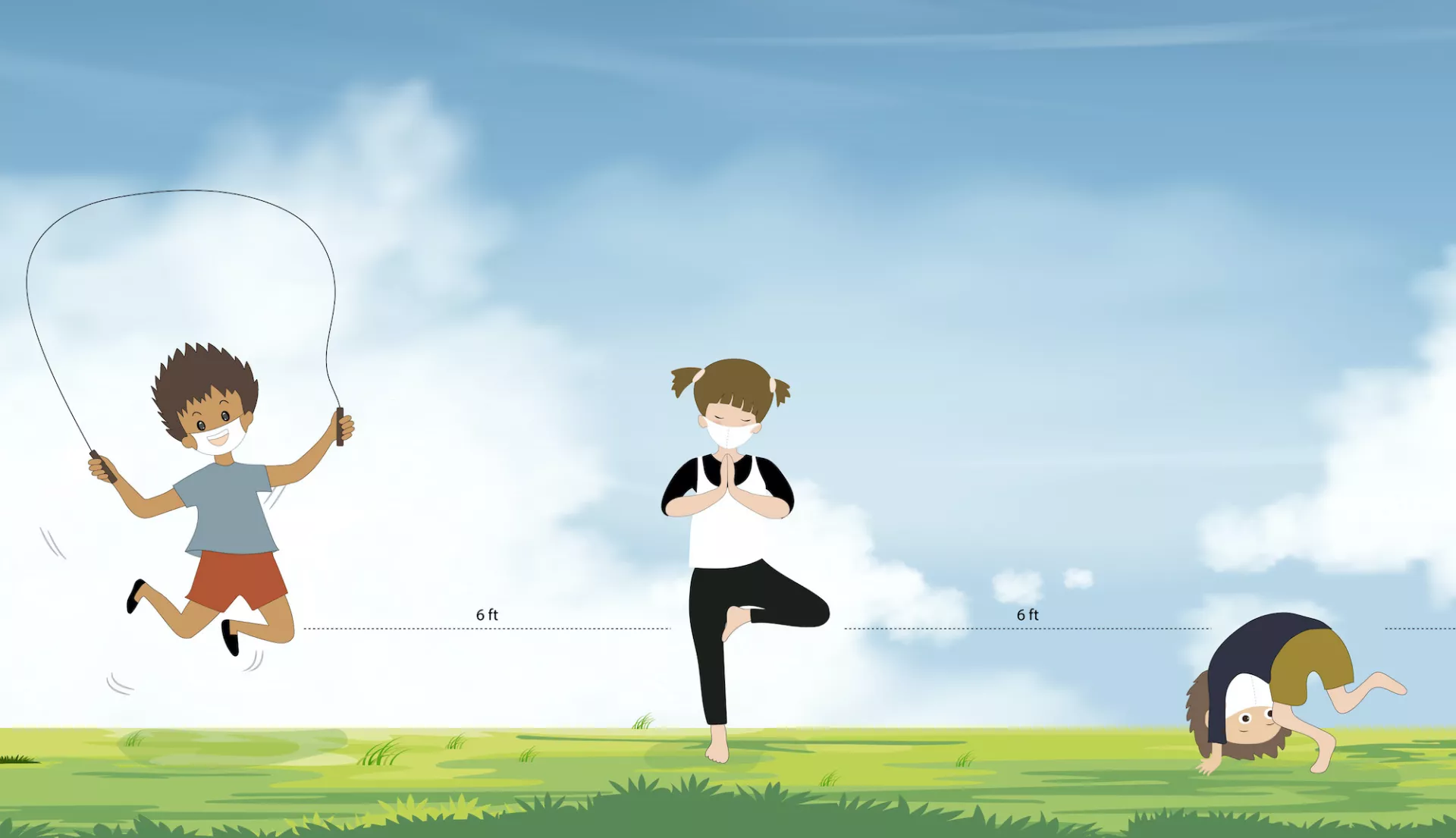Key Takeaways
- Educators need to help students heal from this year's trauma before they can turn their attention to "learning loss."
- Playtime is essential to healing, as it fosters relationships and teaches social-emotional skills.
- Current physical distancing guidelines should not be an obstacle to a well-structured recess.
As students return to school buildings across the U.S., after as much as a year of at-home, distance learning, many school districts are focusing on what they call “learning loss,” or the academic setbacks suffered during the COVID-19 pandemic. They’re putting the cart before the horse, says Rebecca London, an associate professor at the University of California, Santa Cruz, and the author of “Rethinking Recess: Creating Safe and Inclusive Playtime for All Children in School.” Before academics can be addressed, educators must help students heal from the trauma of the pandemic, says London. Achieving that, especially among elementary-age children, depends on providing them with opportunities during the school day for play.
Recently, we talked to London about how recess can be part of the school day this spring, even with COVID-19 safety restraints, and why play is so important to children, especially now.
There’s been a lot of talk recently about “learning loss,” and how students have a lot of ground to make up. How does play fit into these priorities?
Play is how we heal, and we have a lot of healing to do. I can’t think of a national event like this one, which has affected so many people, across the country, with so much sustained trauma and loss. Maybe World War II is the closest event of this kind.
The American Academy of Pediatrics recently issued a really important statement that says—and I agree—that we need to focus on healing before we think about learning loss. Until healing happens, we can’t expect students to make up their learning loss from the past year.
The key to healing trauma is through fostering relationships. Our goal now has to be to rebuild relationships between students and students, students and teachers, and between students and counselors, administrators, and other adults. One important way to build relationships is through play. So, the question is: how do we find opportunities for play in school?
A lot of play happens at school during recess, but it’s not the only time students can play. Teachers can take 5-minute breaks for play during class time, too.
What does a good recess look like?
A good recess is an organized recess. And by organized, I don’t mean structured. Structured recess is more like [physical education], everybody doing the same thing at the same time. Organized recess is a free-choice recess with games in specific places around the yard. Everybody knows where to go for the games they choose, and there are common rules established in those games so that we’re not debating double bounces vs. triple bounces on the foursquare court. There also are established mechanism for resolving conflict. Playworks—it’s a national nonprofit that supports safe and healthy recess—uses ‘rock, paper, scissors’ and it’s amazing how well that works to resolve simple conflicts.
The worst thing you could do is throw kids out at recess by themselves with no expectations for what’s going to happen and allow bullying and exclusivity to happen. Especially now, we want kids coming back to school and feeling emotionally and physically safe.
A really important part of recess is the way adults interact with children. Not all adults monitoring recess want to play with children, and that’s fine, but you can still encourage kids to play fairly and you can encourage games to be inclusive. Of course, if adults want to play, that’s ideal. Kids love it when adults—principals, counselors, the personal aides who work with students with IEPs—want to play with them.
The worst thing you could do is throw kids out at recess by themselves with no expectations for what’s going to happen and allow bullying and exclusivity to happen. Especially now, we want kids coming back to school and feeling emotionally and physically safe.
Do you still hear of educators withholding recess as punishment?

Withholding recess is still the most common form of punishment in elementary schools, even though no research shows it is effective. Teachers will say they don’t want to take play time away, but it’s the only thing kids care about so it’s an effective punishment. I don’t ever agree with this, but at this time especially, when we’re trying to heal, nobody should have recess withheld.
Also, and this is important as we bring kids back to school and recess, we need adults to see that aggressive or impulsive behaviors could be normal responses to trauma. We don’t want to punish students for having normal responses to trauma. If adults supervising recess aren’t trained in trauma-informed practices, what can district administrators do to support those staff? How can we provide them with information about trauma-informed practices? Are there community partnerships that could be built?
How much recess should students have?
On average, schools offer about 20 minutes a day for recess. I think that’s far too low. Two 20-minutes periods a day would be much more appropriate for elementary.
In general, kids who are in more urban schools, serving more Black and brown students, have less recess time and are more likely to have no recess. Some of this is a vestige from the test-score era. Those schools that were labeled as ‘failing schools’ often felt the best remedy to the problem of low test scores was to have more time in seats. Some big districts eliminated it entirely. In Chicago, they didn’t have recess for so long that they built new schools without yards! Now, they’re bringing back recess and trying to figure out where to have it.
This was a very misguided approaching to teaching young children. The teachers knew this, of course. It wasn’t child development specialists making these [anti-recess] policies. It was people who thought having 7-year-olds sit still all day was the best way for them to learn math.
The opposite is true. Access to play helps develop strong relationships and social-emotional skills like collaboration, good decision-making and empathy—the kinds of things that will help kids to be successful in life.
How do current, physical distancing requirements affect recess?
There are tons of games you can play with kids at a distance that are really fun. Playworks has a whole library of distanced games — one idea is noodle tag with swimming-pool noodles. A six-foot noodle achieves a six-foot distance during tagging!
There also are ways for teachers to promote social-emotional learning outside, apart from recess. For young children, following directions is an important skill to learn, so how about teachers take five minutes to play ‘Simon Says’ outside? It takes some creativity and thought, but the rewards are very high. Teachers are going to feel very good when they see their students smile!


